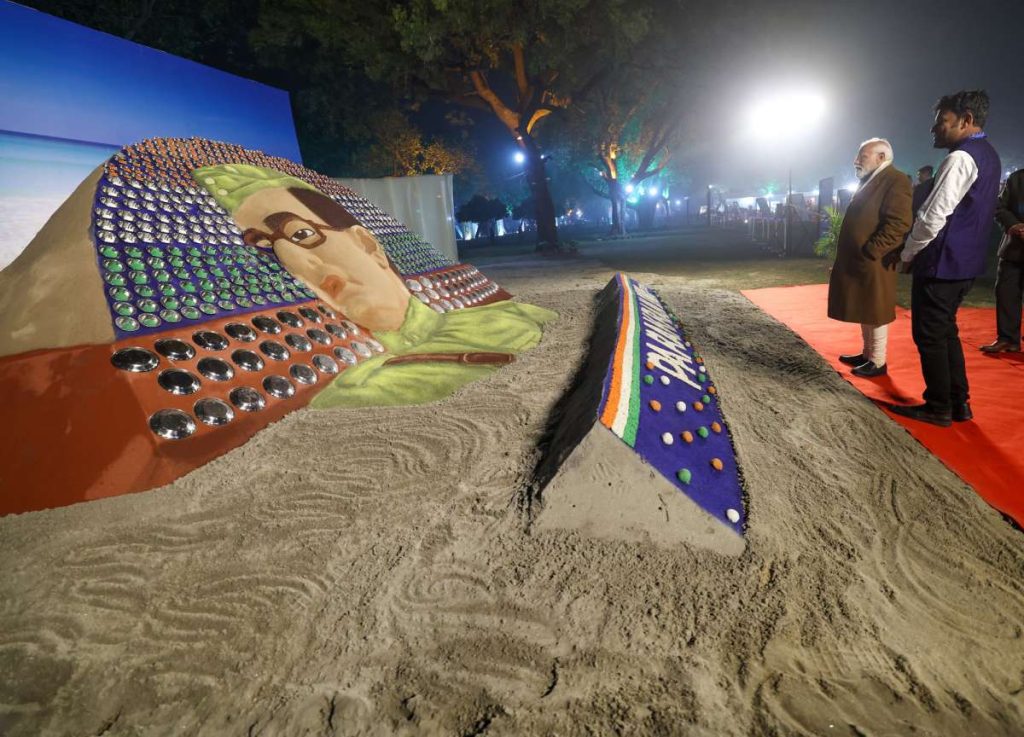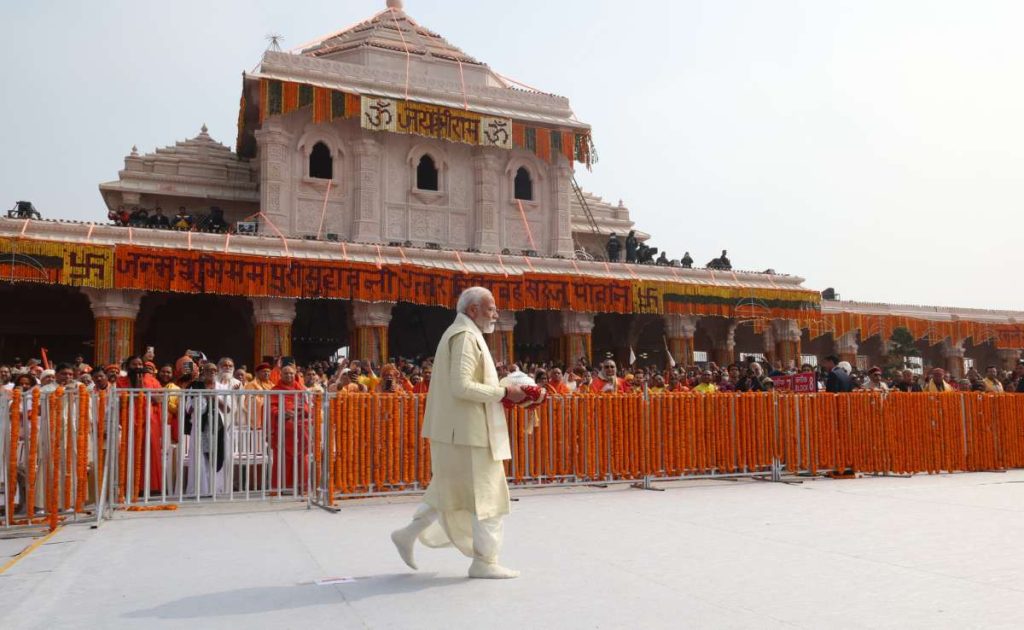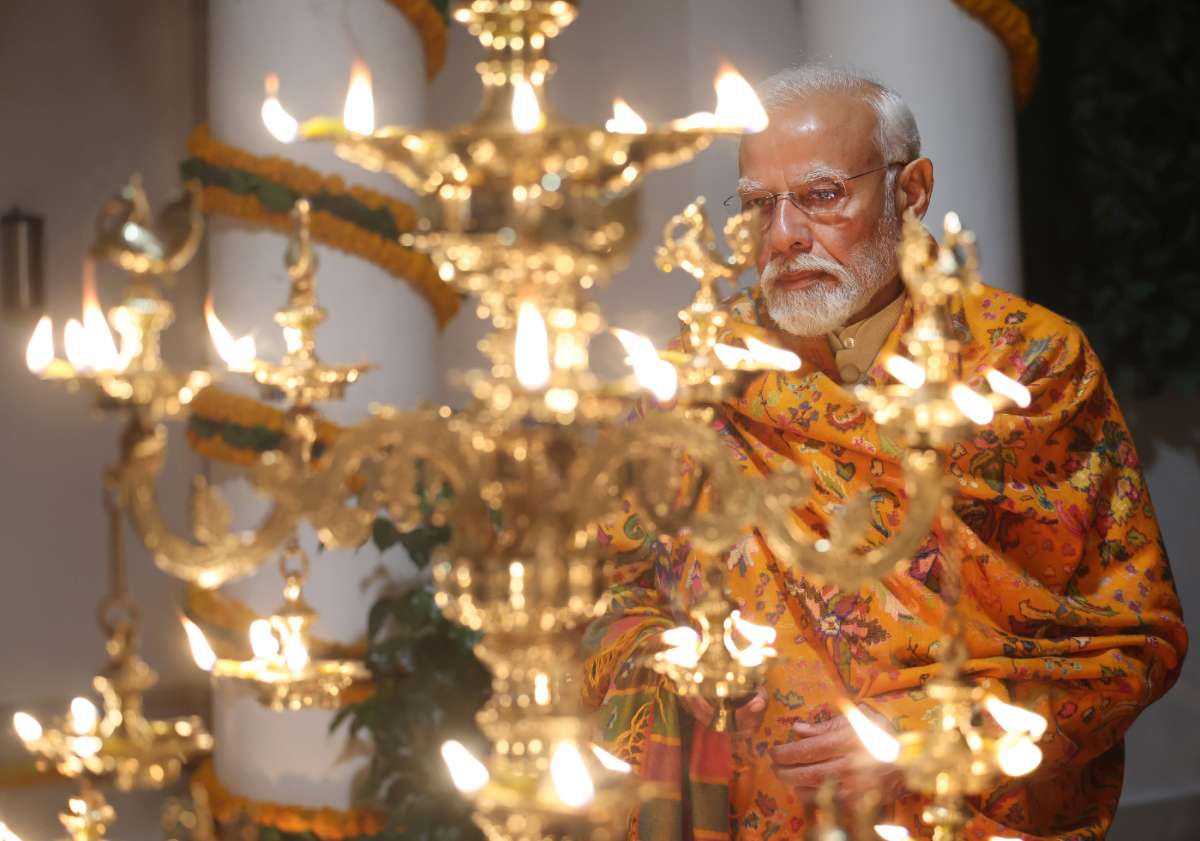
Prime Minister Narendra Modi is so confident of winning the election in his closing speech to the Lok Sabha he proudly announced the number of seats he would get, writes Mihir Bose
I have just arrived in Kolkata and am sitting in the breakfast room of the Grand. I open my copy of the Times of India and turn to the City pages to find out what is going in Kolkata, the city of my birth. I expect to find some interesting stories. Instead blazoned on the top of the page is an advertisement extolling the Narendra Modi government. The heading in bright red reads “Modi Sarkar ki Guarantee. Electrification of every household. 2 crore 86 lakh houses get electricity connections under Saubhagya Yojana.” The advertisement is framed by two pictures. At one end is a picture of Modi, his hair and beard white, smiling happily, the other end shows a picture of a wife, husband, and child also smiling happily as they gaze at a light hanging from the ceiling.
The following day I open Times City and find an advertisement on the top of the page with an identical headline, “Modi Sarkar ki Guarantee”. But this time it is addressed to famers. It says “PM Fasal Bima Yojana becomes safety net for farmers. Claims worth Rs 1 lakh 50 thousand crores has been paid to 16 crore farmers.” This time the advertisement balances a picture of Modi with that of a turbaned farmer tending to his crops in his field and smiling broadly. In the days that followed every edition of the Times City had such Modi government advertisements.
The Times of India was not the only paper the government uses. The Statesman,which once used to be Kolkata’s leading English language paper, had on its front page an advertisement with an identical headline but this time the Modi Sarkar was guaranteeing an “Unprecedented boost to entrepreneurship. More than 45 crore collateral- free loans of Rs 26 lakh core given under MUDRA Yojana”. This time Modi was shown wearing a striped blue waist coat and the picture at the other end was of two women pausing from their work to smile at the camera .
Of course, government advertisements of this sort are not a new thing in India. Both central and state governments have for years used them to promote their achievements. Indeed, on the very same day that the Times carried its Modi government advertisement the Hindu had an advertisement from the West Bengal government which showed the happy faces of a young boy and a young girl under the headline, “Heartfelt best wishes to all the High Madrasah, Alim and Fazil Examinees.” At the bottom of this advertisement was a smiling picture of Mamata Banerjee, the chief minister. There could be no greater opponent of Modi than Mamata and the advertisement was clearly courting her Muslim constituency, bedrock of her support. However, the Modi government has been going further and there have been occasions where events publicising Modi Sarkar Ki Guarantee have essentially become BJP election campaigns to win votes.

Modi is so confident of winning that in his closing speech to the Lok Sabha he proudly announced the number of seats he would get. Such a victory would mean that Modi would have achieved something no Indian Prime Minister has managed since India’s first Prime Minister Jawaharlal Nehru, win three successive elections. More significantly it will also mean that the Republic that Nehru proclaimed on 26th January 1950 would have taken a very decisive turn. Indeed, Modi’s supporters are already calling it the coming dawn of the second Indian republic.
Modi has already sketched out what the contours of this second republic will be. He did so when in the days leading up to the consecration ceremony of the Ram temple in Ayodhya he went on an eleven day anushsthan, during which he fasted and also visited temples in the south including the Veerbhadra Temple in Lepakshi, Andra Pradesh, the Thriprayar Sree Ramaswami Temple in Kerala, the Srirangam’s Sri Ranganatha Temple and the Ramanathaswamy Temple in Rameswaram. Modi’s intentions were clear. He was trying to demonstrate how Hinduism unites north and south all the more important to him as in the south his political will does not run and there are many parties there who would not accept the narrative the BJP want to impose.
And this is where Modi is so cleverly using history. In Nehru’s India that I grew up there was one very important date in the calendar. That came on 26 January to mark the day India became a republic. August 15 was celebrated as Independence Day but Republic Day is when the nation came alive with streets and buildings decorated by lights and flags and marked by a sense of national joy that August 15th did not quite convey. The horrors of partition overlay 15th August. Also, that day India was still a dominion and accepted the British monarch as head of state. 26 January was the day when India was finally, completely, free of British control. Now Modi has extended that day to a whole week, and this marks the first step to India becoming a Hindu state. It is interesting to see how this has developed.
It started with Modi christening January 23, the birthdate of Netaji Subhas Chandra Bose as Parakram Diwas. During the early years of Indian independence Bose, who left India during the second world war to seek foreign help to free India, raising an army with the help of the Japanese, was the other, the man who had rebelled against Gandhi and his ideas of non-violent struggle to liberate India. By making Bose’s birthday Parakram Day Modi the BJP wanted to emphasise that Bose was very much part of the story of how India won freedom, indeed more important than Nehru. He was no longer an outsider. But with the Ram temple consecrated on January 22 now the new Modi week to mark this second Republic begins even earlier and brings in religion to a government celebration for the first time.
Modi himself put it very well when, during the speech he made to mark Bose’s birthday, he said, “Over the last few years, since January 23 was declared as Parakram Divas, the significant festival of Republic Day now begins from January 23 and continues until January 30, the death anniversary of Bapu. Now, the grand spiritual festival of January 22(consecration of Ram Temple in Ayodhya) has also been added to this celebration of Republic Day. These last few days of January are becoming highly inspiring for our spiritual and cultural consciousness, as well as our democracy and patriotism”.

His words could not more clearly lay out how Modi’s India is different to Nehru’s India. India since it won independence has always been very proud that it was a secular country. Britain is secular, but the monarch is the head of the church, King Charles pledged at his coronation to defend the Anglican faith and every state function is associated with the Anglican church. In India religion has played no part in the state. Until now.
This is best illustrated when we look back at what happened to the Somnath Temple, destroyed by Mahmud of Ghazni. For many Hindus the destruction of the temple is the Hindu equivalent of the destruction of the second temple of the Jews. Not surprisingly, soon after independence, there was a move to rebuild Somnath, led by K M Munshi, then a member of Nehru’s cabinet. In a letter to Nehru, Munshi wrote, “I can assure you that the “collective sub-conscious” of India today is happier with the scheme of reconstruction of Somnath sponsored by the Government of India than with many other things that we have done and are doing.” Munshi was not being absolutely truthful. In fact, the restoration was funded by private donations. However, Munshi did have the backing of many in the government.
India’s first President, Rajendra Prasad, agreed to inaugurate the rebuilt temple. But Prasad was going against the advice of Nehru, who thought this went against the idea of secularism. Nehru, as Sarvepalli Gopal, Nehru’s official biographer, put it, “while unwilling to veto Prasad’s acceptance, sought to make it clear his government had no part in the decision”. Gopal saw Prasad’s association with the inauguration as evidence that India’s first President “was still prominent in the ranks of medievalism”.
In Modi’s India this would have been something to celebrate not condemn. The government would have funded the rebuilding of Somnath Temple and Modi performed its inauguration. The Ram Janmabhoomi movement has transformed Indian politics since the 1980s and all the signs are there will be more attempts to reclaim places where Hindus claim temples were destroyed and mosques built. The next flashpoint has already been identified. This is the Gyanvapi mosque in Varanasi with Alok Kumar, international working president of the Vishwa Hindu Parishad, saying that mosque should be shifted to another appropriate place and the site, which the Hindus see as the original site of the Kashi Vishvanatha, handed over to the Hindu community. The Supreme Court is already involved in this issue and the case could drag on for years. This could eventually be another Modi Sarkar ki Guarantee.
Another election victory will spell out India’s Second Republic in even larger letters.
Mihir Bose’s memoir ‘Thank you Mr Crombie Lessons in Guilt and Gratitude to the British’ will be published in May by Hurst.

Leave a Reply